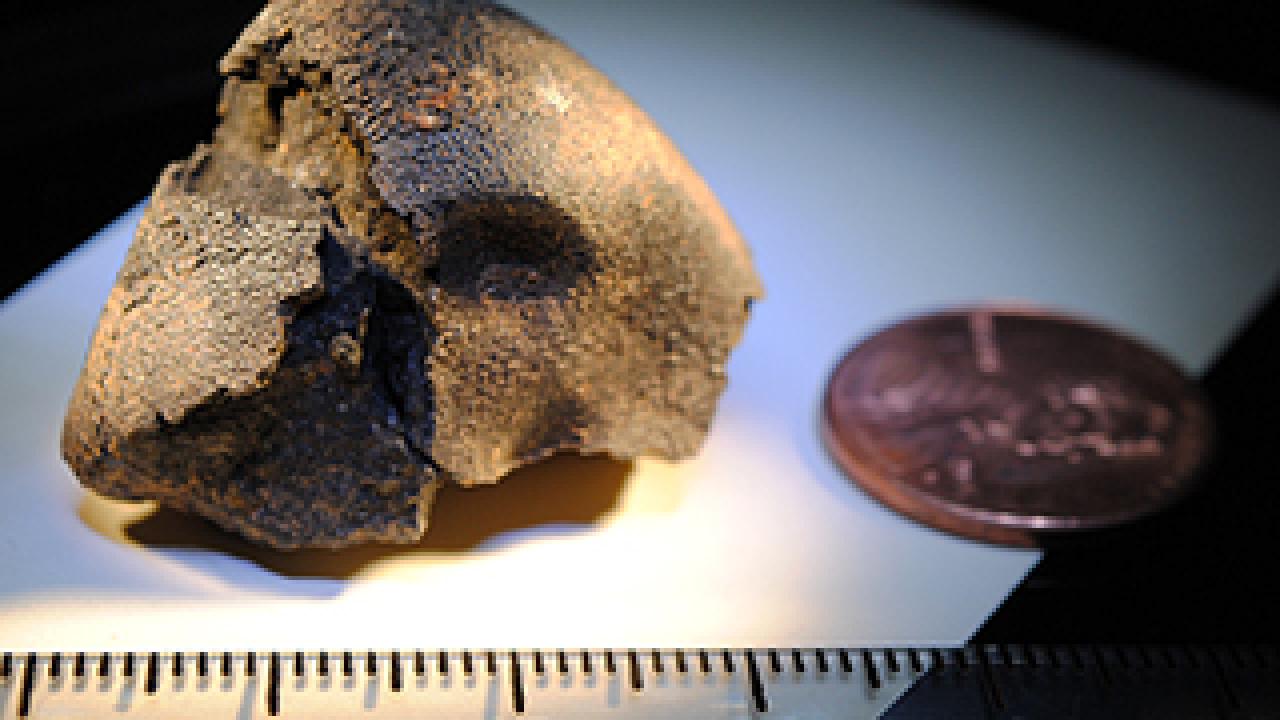A University of California, Davis, geologist is appealing for public help in tracking down pieces of the meteorite that blew up over El Dorado County on April 22.
The meteorite, about the size of a minivan, was the rarest type to hit the Earth -- a "carbonaceous chondrite" containing dust and grains, thrown from nearby stars, that went on to form the planets of our solar system billions of years ago, said Professor Qing-Zhu Yin of the UC Davis Department of Geology.
By studying fragments of the meteorite, Yin hopes to learn more about exactly how and when the Earth, Mars and other planets formed. His lab at UC Davis is one of a few in the country equipped to make the most accurate measurements of the age and composition of meteorites.
Studying the meteorite could also give insight into the origins of life on Earth, as this type of meteorite is known to contain amino acids, sugars and other organic molecules that are the basic building blocks of life.
Fragments collected so far have attracted high prices from collectors, and some have gone out of state. Yin said he has access to some pieces collected by local residents, but would like to encourage anyone finding a meteorite to donate it to his laboratory.
"We want to realize the scientific value of this event," he said. "It can't be measured in dollars."
So far, most of the search has been around the towns of Lotus and Coloma. But Yin said that there may well be larger pieces farther west, as the meteorite was apparently traveling in that direction when it broke up.
Meteorite fragments will be black or grayish, with a "goose bump" surface and characteristic cracks. If pieces have broken off, specks of minerals will be visible inside, embedded in a charcoal-like matrix. They should look quite distinct from surrounding rocks. Photographs of specimens can be sent to Yin at qyin@ucdavis.edu for authentication.
If you find a fragment, record the location and avoid touching it with bare hands. Wrap it in tin foil and place it a sealable plastic bag. Mapping the exact location of any pieces is important for determining where the debris spread, Yin said.
Yin advises people not to test pieces with a hand magnet, because this could imprint magnetic signals into the rock and compromise its scientific value for later studies of the magnetic field of the early solar system.
Yin said he's grateful for the support and enthusiasm he's received from the local community over the past few weeks. On May 20, he gave a public talk to a packed house at Gold Trail Grange in Coloma.
"I very much enjoyed the opportunity to talk to the public about this work, and we had a lot of good questions," Yin said.
Donations of meteorites to the university can be considered as in-kind donations at the current market price. Donations to support Yin's work, and the training of future scientists, are also welcome.
Media Resources
Kat Kerlin, Research news (emphasis on environmental sciences), 530-750-9195, kekerlin@ucdavis.edu
Qing-zhu Yin, Geology, 530-752-0934, qyin@ucdavis.edu
